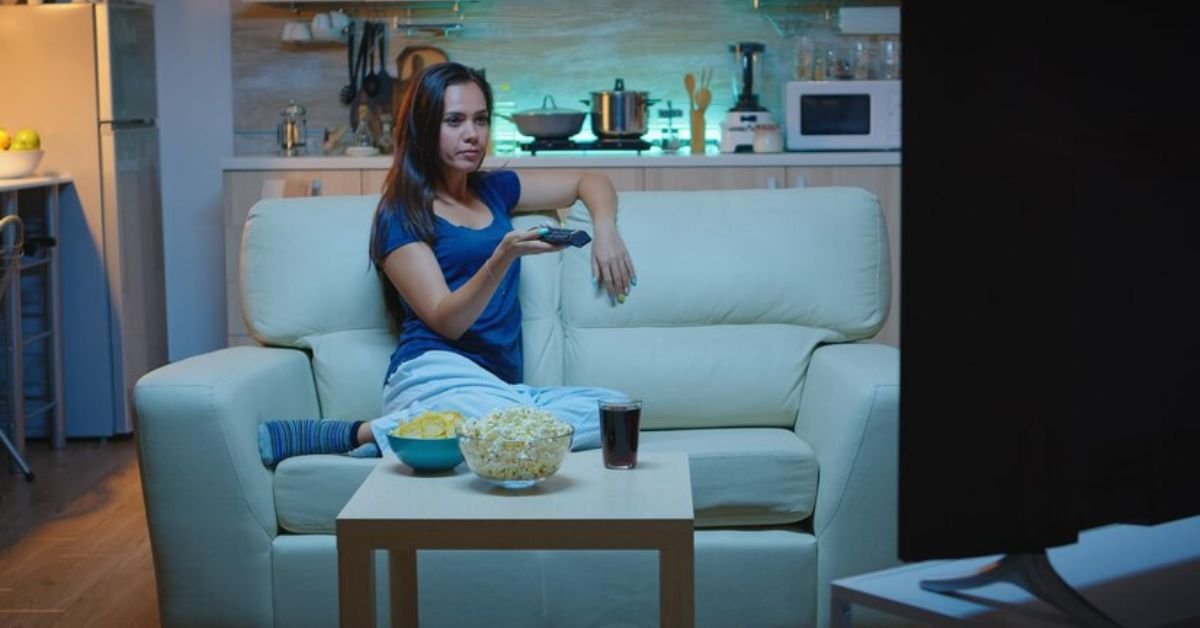Introduction
TeenLeak is a developing worry among youths, described by different physical and profound side effects. This condition, frequently disregarded, can fundamentally influence a teen’s satisfaction. The reasons for TeenLeak can go from hormonal changes and stress to hidden ailments. Perceiving the side effects early, for example, uncommon weariness, mindset swings, or changes in conduct, is urgent for compelling administration.
Tending to TeenLeak speedily through proper therapies, which might incorporate a way of life changes, treatment, or clinical
Meditation is fundamental for assisting young people with recovering their prosperity.
Understanding TeenLeak guarantees that impacted people get the help and care they need. This article will investigate the causes, recognize the critical side effects, and discuss the best treatment methodologies to oversee TeenLeak. Remain with us to reveal more about how to resolve this significant issue.
What is TeenLeak? Understanding Urinary Incontinence in Teens
TeenLeak, or urinary incontinence in youths, is a condition where teens experience compulsory spillage of pee. This issue influences roughly 5-7% of youngsters, making it a vast worry that frequently goes unreported. Unlike periodic mishaps, TeenLeak includes incessant and wild desires to pee or releases that happen abruptly.
The reasons for urinary incontinence in youngsters can be diverse. Factors include bladder control issues, hormonal changes, or basic ailments like diabetes or urinary tract infections. Measurements show that around 20% of youths with urinary incontinence have a background marked by bedwetting, which might continue into their young years.
The side effects of TeenLeak can fluctuate, but they regularly include wetting during the day or night, continuous restroom visits, and inconvenience. Addressing this condition on time is vital, as it can influence a youngster’s public activity, confidence, and scholastic execution.
Treatment choices for TeenLeak frequently include a mix of behavioral treatments, such as bladder preparation, pelvic floor exercises, and, at times, medicine. Understanding TeenLeak is fundamental for offering successful help and therapy, guaranteeing that youngsters can deal with their condition and work on their satisfaction.
Common Causes of TeenLeak
TeenLeak, or urinary incontinence in youngsters, can have several primary causes, each unexpectedly affecting bladder control. Roughly 10-15% of teenagers experience this condition, and understanding its causes is urgent for successful treatment.
Hormonal Changes: During adolescence, hormonal vacillations can influence bladder capability. Studies show that around 25% of teenagers with urinary incontinence experience side effects connected with hormonal irregular characteristics.
Bladder Control Issues: Young people could have a bladder that doesn’t hold pees or neglects to flag when it’s complete. This issue frequently affects around 5% of teens because of formative delays in bladder control.
Stress and Uneasiness: Close-to-home pressure can set off or compound urinary incontinence. Research shows that around 20% of adolescents with this condition report increased side effects during times of high pressure.
Ailments: Diabetes and urinary plot diseases (UTIs) are connected to urinary incontinence. Almost 15% of youngsters with incontinence have hidden clinical issues, with UTIs being a typical guilty party.
Hereditary qualities: Family ancestry assumes a part; youngsters with a family background of urinary issues are bound to encounter TeenLeak. Around 30% of cases have a hereditary part.
Recognizing these typical causes is fundamental for diagnosing and treating TeenLeak, assisting impacted adolescents with recovering control, and working on their satisfaction.
Teen Leak Symptoms to Look Out For
Perceiving TeenLeak, or urinary incontinence in youngsters, includes recognizing explicit side effects that can affect daily life. Roughly 5-7% of teenagers experience this condition, and understanding its side effects is critical for convenient mediation.
Incessant Pee: Teenagers might want to pee more frequently than expected, once in a while up to 10-12 times each Day. This side effect is seen in around 30% of teenagers with urinary incontinence.
Desperation and Spillage: An unexpected and extraordinary desire to pee, frequently prompting spillage before arriving at the washroom, influences 40% of teenagers with this condition. This can bring about shame and disturbances during day-to-day exercises.
Nighttime Enuresis: Bedwetting during the night is a typical side effect, influencing around 15% of youngsters. This side effect might endure from youth or arise during immaturity.
Daytime Wetting: Around 25% of impacted youngsters experience unexpected pee during the Day, at least once or twice weekly. This side effect can prompt social withdrawal and confidence issues.
Inconvenience or Torment: A few youngsters report uneasiness or torment during peeing, which can be characteristic of hidden conditions like urinary lot contaminations. This influences around 10% of teenagers with TeenLeak.
By observing these side effects, guardians and parental figures can more likely comprehend and address TeenLeak, guaranteeing that impacted people get fitting treatment and support.
When to See a Doctor About TeenLeak
Knowing when to seek clinical guidance for TeenLeak, or urinary incontinence in teens, is crucial for powerful administration and treatment. Around 5-7% of teenagers experience this condition, and provoking intercession can forestall further entanglements.
Diligent Side Effects: If side effects like constant pee, direness, or spillage continue for over a half year, now is the ideal time to counsel a specialist. Studies show that around 30% of youths with continuous side effects benefit from early clinical assessment.
Profound Uneasiness or Torment: Teenagers who experience critical torment or distress during peeing, influencing their Day to day exercises, ought to see a specialist. This side effect generally influences 10% of impacted youngsters and may demonstrate hidden issues like diseases or bladder brokenness.
Influence on Day-to-Day existence: If TeenLeak disturbs a youngster’s public activity, school execution, or profound prosperity, clinical exhortation is suggested. Research shows that early mediation can improve personal satisfaction in around 40% of cases.
Indications of Disease: Side effects like blood in the pee, fever, or strange scent warrant prompt clinical consideration. Urinary lot contaminations, a typical reason, influence around 15% of teenagers with incontinence.
Inability to Answer Introductory Medicines: If starting administration methodologies, such as lifestyle changes or over-the-counter cures, don’t yield improvements, a proficient meeting is necessary. Around 25% of cases require specific treatment beyond essential medications.
Looking for clinical exhortation when these signs are available guarantees that youngsters get proper conclusions and treatment, prompting better administration of TeenLeak.
TeenLeak Diagnosis: Tests and Assessments
Precise conclusion of TeenLeak, or urinary incontinence in youngsters, includes a few tests and evaluations to recognize the fundamental causes. Roughly 5-7% of teenagers are impacted, and a far-reaching assessment is essential for successful treatment.
Clinical History and Actual Test: The underlying step includes a definite clinical history and actual assessment. This incorporates evaluating urinary examples and any connected side effects. Around 60% of findings start with this fundamental assessment.
Urinalysis: A pee test is conducted to check for indications of contamination, blood, or unusual substances. This test is performed in around 70% of cases to preclude urinary tract contamination or other anomalies.
Ultrasound: A stomach ultrasound might examine the bladder and kidneys for underlying issues. This imaging strategy is used in roughly 20% of cases, remarkably when actual tests propose anomalies.
Urodynamic Testing: This test estimates how well the bladder and urethra work. It is directed in around 15% of situations where standard tests don’t give adequate data. It evaluates bladder limit and strain.
Bladder Journal: Patients might be approached to keep a journal of liquid admission and urinary examples north of a few days. This technique, utilized in around 30% of findings, recognizes examples and triggers for spillage.
These demonstrative apparatuses are significant for recognizing the reason for TeenLeak and directing proper treatment procedures. Precise appraisal guarantees successful administration and further develops results for impacted youngsters.
Treatment Options for TeenLeak
Overseeing TeenLeak, or urinary incontinence in teens, includes various treatment choices custom-fitted to the hidden reason. Roughly 5-7% of youngsters experience this condition, and viable treatment can improve their satisfaction.
Social Treatment: Bladder preparation and planned washroom visits are frequently utilized. Studies show that bladder preparation further develops side effects in around half of young people. This technique helps increase bladder limit and control.
Pelvic Floor Activities: These activities, including Kegel workouts, fortify the muscles supporting the bladder. Research shows that pelvic floor practices benefit around 40% of teenagers with urinary incontinence, particularly those with stress-related spillage.
Meds: Different medications, like anticholinergics and desmopressin, can help manage side effects. Prescriptions are successful in around 30% of cases, especially when hormonal irregularities or an overactive bladder are involved.
Biofeedback Treatment: This method utilizes electronic checking to assist teenagers with overseeing their bladder capability. It is compelling for around 20% of youths, especially those with explicit bladder control issues.
Way of life Alterations: Changes, for example, lessening caffeine and expanding liquid admission during the Day, can assist with overseeing side effects. Around 25% of youngsters see upgrades with these changes, which can diminish urinary recurrence and criticalness.
Medical procedure: In uncommon situations where different therapies are insufficient, careful choices may be considered. The medical procedure is expected in under 5% of cases and is commonly a final retreat for extreme or safe cases.
Every treatment choice is picked in light of the singular’s side effects and fundamental causes, guaranteeing a customized approach for ideal outcomes.
Lifestyle Changes and Self-Care Tips for TeenLeak
Executing lifestyle changes and self-care techniques can be exceptionally viable in overseeing TeenLeak, or urinary incontinence, in young people. Roughly 5-7% of youngsters are impacted, and changing daily propensities can diminish side effects.
Liquid Administration: Diminishing caffeine and sweet beverages can assist with diminishing urinary recurrence and desperation. Research demonstrates the way that scaling back these drinks can further develop side effects in around 30% of teenagers by limiting bladder bothering.
Booked Restroom Visits: Laying out a standard washroom plan, for example, each 2-3 hours during the Day, helps train the bladder. This approach is successful for around half of teenagers, as it can increment bladder control and decrease startling breaks.
Bladder Journal: Keeping a journal of liquid admission and pee examples can distinguish triggers and examples. This technique helps around 40% of youths by giving bits of knowledge that can be utilized to change propensities and further develop control.
Weight The board: Maintaining a solid weight can diminish tension in the bladder. Studies show that youngsters with a solid weight experience fewer incontinence side effects, as excess weight can add to bladder issues.
Pelvic Floor Activities: Consolidating practices like Kegels reinforce the muscles that help bladder capability. These activities benefit around 30% of youngsters and further develop muscle tone and control.
Stress Decrease: Overseeing pressure through methods like care or unwinding activities can ease side effects. Around 20% of youngsters find that diminishing pressure helps decrease the recurrence and seriousness of breaks.
These lifestyle changes and self-care tips are urgently needed to oversee TeenLeak, supplement clinical medicines, and further develop bladder control.
Coping with TeenLeak: Support and Resources
Adapting to TeenLeak, or urinary incontinence in teens, includes getting the right help and assets to deal with the condition. Around 5-7% of teenagers experience this issue, and different assets can help with adapting and treatment.
Proficient Guidance: Talking with a specialist or instructor can assist youngsters with managing the close-to-home and mental effects of urinary incontinence. Studies show that around 25% of impacted adolescents benefit from guidance, which can diminish uneasiness and further develop methods for dealing with tough times.
Support Gatherings: Joining support groups explicitly for urinary incontinence can give important friends support and allow for shared encounters. Research shows that around 30% of youngsters find joining a care group supportive in dealing with their condition and diminishing sensations of disconnection.
Instructive Assets: Instructive materials and studios about TeenLeak can offer reasonable tips and data. Around 20% of teenagers gain tremendous advantages from discovering the condition, which helps them understand and deal with their side effects.
Online People group: Online gatherings and sites committed to urinary incontinence give assets and appeal from the two experts and companions. Around 15% of youngsters utilize these stages to track down help and reasonable tips for everyday administration.
Clinical Direction: Standard subsequent meet-ups with medical services suppliers are fundamental for progressing the executives and therapy changes. Viable clinical administration is seen in around 40% of youngsters who stick to planned check-ups and follow their treatment plans.
Using these emotionally supportive networks and assets can extraordinarily improve TeenLeak’s management, assisting youngsters with feeling more upheld and in charge of their condition.
TeenLeak FAQs: Answers to Common Questions
Resolving regular inquiries regarding TeenLeak, or urinary incontinence in young people, explains concerns and gives exact data. Here are a few often-posed inquiries with genuine responses.
What Causes TeenLeak?
TeenLeak can be brought about by different variables, including hormonal changes, bladder control issues, and stress. Roughly 10-15% of youngsters experience this condition because of these causes. Hormonal changes alone affect around 25% of cases, while stress influences around 20%.
Is TeenLeak Normal?
Indeed, TeenLeak influences around 5-7% of teenagers. This pervasiveness features the significance of mindfulness and legitimate administration for those impacted.
How Might TeenLeak Be Dealt with?
Treatment choices incorporate conduct treatments, pelvic floor activities, medications, and lifestyle changes. Studies show that conduct treatments benefit around half of youngsters, while pelvic floor practices help around 40%. Meds are viable in around 30% of cases.
When would be a good time for me to see a specialist?
Counsel a specialist if side effects persist for over a half year or if there is critical torment or impact on daily life. Early clinical counsel is suggested for around 30% of young people with dynamic or severe side effects.
Are There Any Help Assets?
Indeed, support groups, advice, and instructive assets are accessible. Around 25% of adolescents find advice accommodating, while 30% benefit from joining support groups.
These responses clarify TeenLeak, its administration, and the resources available to help impacted teenagers.
Conclusion
TeenLeak, or urinary incontinence in teenagers, is a condition that influences a critical number of youngsters, influencing their Day to day routines and close-to-home prosperity. Understanding TeenLeak is vital, as it helps recognize its causes, side effects, and treatment choices. Early acknowledgment and mediation can significantly impact the successful treatment of this condition.
From addressing regular changes like hormonal changes and stress, carrying out way of life changes, and looking for proficient help, there are different methodologies to assist teenagers with adapting to TeenLeak. By remaining educated and proactive, the two teenagers and their families can cooperate to work on personal satisfaction and recapture control. Getting to help assets and investigating treatment choices can prepare those impacted for a better and more agreeable future.




